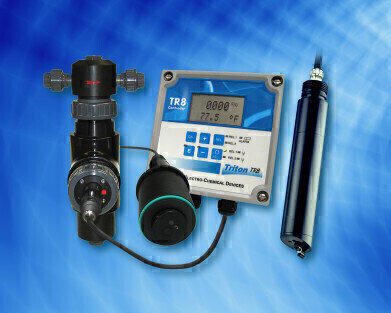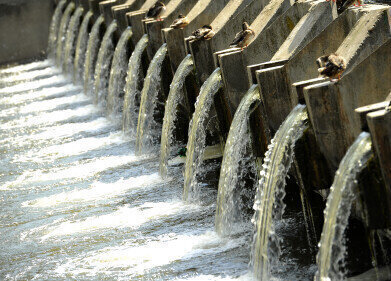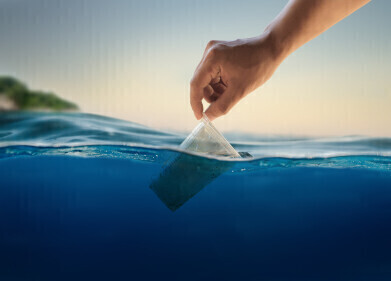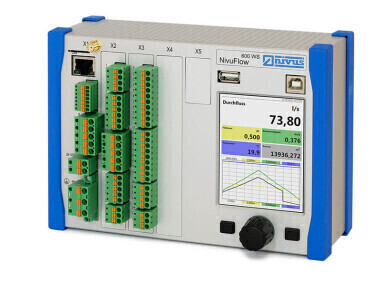Drinking Water
Analyser with Intelligent Sensor Technology Optimises Water Filter Backwash Monitoring
Jan 17 2013
Engineers in charge of drinking water treatment plants will want to learn more about the precise, low-maintenance Triton TR8 Turbidity Analyser from Electro-Chemical Devices (USA), ideal for monitoring turbidity in filter backwashing systems to optimise plant efficiency.
Filter backwashing is a critical part of the drinking water production process. During backwashing, water flow is reversed and increased in order to flush out debris and particles. Turbidity is used to monitor the progress of the cleaning, and when the turbidity returns to a value near the turbidity of the clear well water the backwash cycle is stopped. Backwashing cleans the filter to preserve water quality and also extends the life of the filter; however, backwashing too frequently can lead to degraded filter performance. Accurately measuring the turbidity of the water coming out of the filter is the best way to determine when backwashing should occur, optimising drinking water plant performance and minimising operating costs.
The Triton TR8 Clear Water Sensor is ideal for all phases of drinking water processing including filter backwash. The highly accurate Triton TR8 TA operates over wide measurement range with output available in multiple units: 0.000 to 9999 FNU, or 0.00 to 3000 ppm, or 0.0 to 3.0 g/l, or 0 to 20 percent. The TR8 TA sensor features an error rate of less than 5 percent of reading with repeatability greater than 1% percent of reading.
The Triton TR8’s sensor features a unique multi-path optical assembly. The first pathway is inside the sensor to a reference detector that compensates for changes in the LED light source caused by ageing or other variables. The second pathway has a short path length through the sample, which is best for high concentration measurements. The third pathway has a longer path length, which is best for lower concentrations.
The Triton TR8 utilises a highly intelligent microprocessor-based design. Its sensor electronics constantly adjusts suspended solids and turbidity signal readings versus the reference detector for superior measurement accuracy. A built-in digital filter helps to suppress potentially interfering signals while self-monitoring diagnostics assure high reliability.
The Triton TR8’s sensor assembly relies on a long-life near infrared LED light source (880 nm), and the 90-degree scattered light method in accordance with ISO 7027 / EN 27027. The sensor is factory calibrated in formazine, FNU (Formazine Nephelometric Units), and is plug-and-play ready for applications. Two non-volatile memory banks are also available onboard to store user-initiated calibration data.
Featuring an inclined face that is oriented into the liquid flow for optimum self-cleaning, the rugged Triton TR8’s sensor assembly greatly reduces plant maintenance requirements to the occasional manual sensor swiping with a soft cloth. An optional automated mechanical wiper also is available for heavy-duty service environments or for difficult-to-reach sensor locations.
The Triton TR8’s sensor was developed for rugged water treatment environments, designed to operate at ambient temperatures from -5 to 50°C (20-120°F). It withstands pressures up to a maximum of 6 bar at 25°C and 1 bar at 50°C.
The TR8’s transmitter digitally communicates with the turbidity sensor and provides a 4-20 mA output and alarm relay. The TR8’s controller features ECD’s multi-bus architecture, with up to 2 outputs and 4 SPDT relays. It includes a configurable display and HART protocol communication is available as well. The turbidity sensor can be located up to 200 m away from the controller.
Digital Edition
AET 28.4 Oct/Nov 2024
November 2024
Gas Detection - Go from lagging to leading: why investment in gas detection makes sense Air Monitoring - Swirl and vortex meters will aid green hydrogen production - Beyond the Stack: Emi...
View all digital editions
Events
Dec 02 2024 London, UK
Dec 03 2024 Dusseldorf, Germany
Dec 11 2024 Shanghai, China
Jan 12 2025 Abu Dhabi, UAE
Jan 14 2025 Abu Dhabi, UAE








.jpg)










